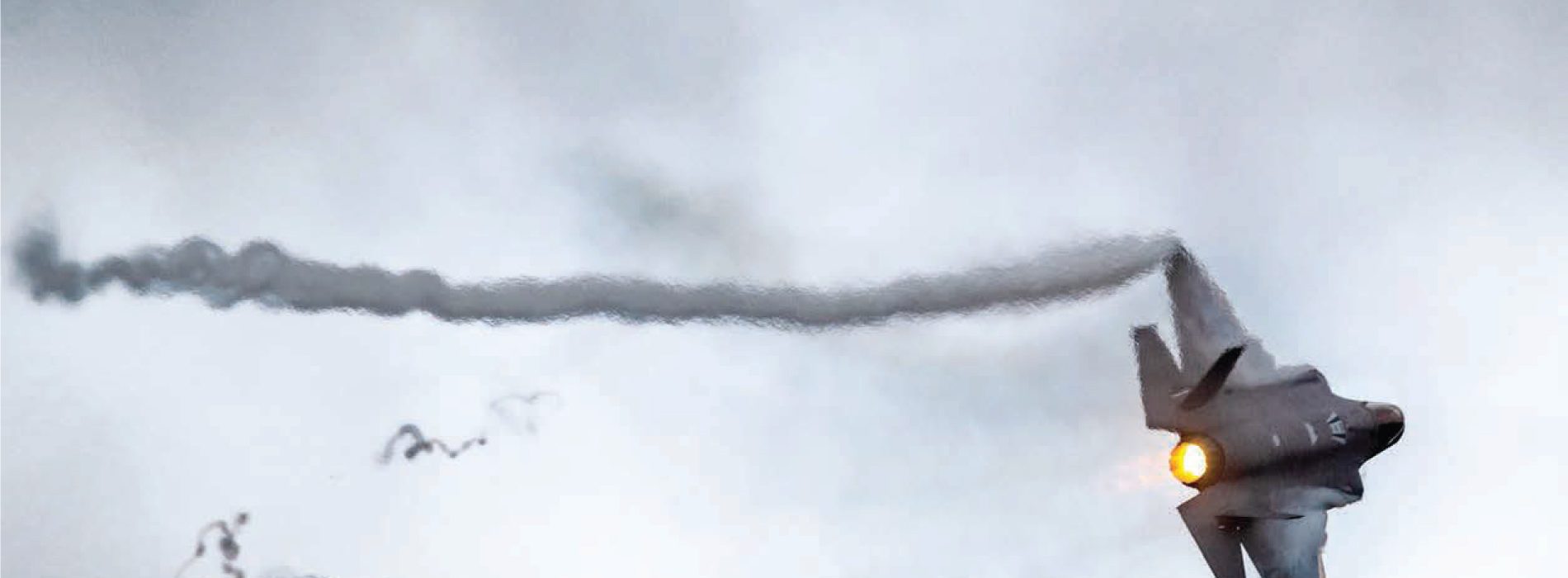Ever since 1991’s Operation Desert Storm, adversaries have systematically watched the American way of war, cataloging the US military’s advantages and methods and developing strategies and systems to erode those advantages and exploit vulnerabilities in US force design. Now America faces challenges from China and Russia, each of which have watched and learned from US strategy in Iraq and Afghanistan and have responded by developing anti-access/area-denial (A2/AD) strategies and systems designed to block the United States from intervening should they choose to aggress against their neighbors.
The National Defense Strategy in 2018 sounded the alarm over the risks posed by Chinese and Russian revisionist ambitions. Wargames that centered on major conflicts with China and Russia have resulted in loss after loss for US forces. According to senior RAND analyst David Ochmanek, “In our games, when we fight Russia and China, blue gets its ass handed to it.”
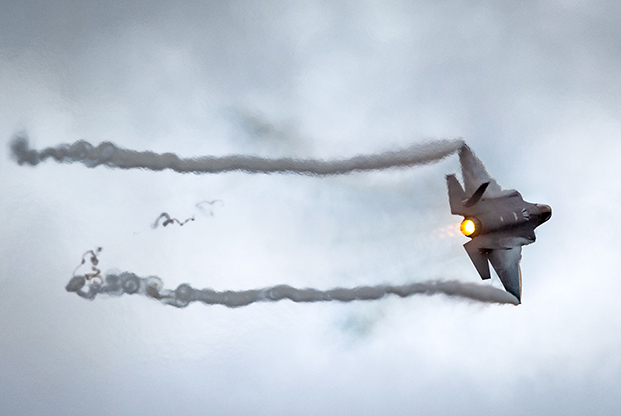
To overcome, the US military must transform itself to a new force design that can withstand and prevail in a systems warfare conflict. Mosaic warfare is one answer: a way of war that leverages the power of information networks, advanced processing, and disaggregated functionality to restore America’s military competitiveness in peer-to-peer conflict.
Mosaic is designed to address both the demands of the future strategic environment and the shortcomings of the current force. The term “mosaic” reflects how smaller force structure elements can be rearranged into many different configurations or force presentations. Like the small, dissimilar colored tiles that artists use to compose any number of images, a mosaic force design employs many diverse, disaggregated platforms in collaboration with current forces to craft an operational system.
Mosaic employs highly resilient networks of redundant nodes to obtain multiple kill paths and make the overall system more survivable, minimizing the critical target value of any single node on the network. This design ensures US forces can be effective in contested environments and that the resulting force can be highly adaptable across the spectrum of military operations. Mosaic combines the attributes of highly capable, high-end systems with the volume and agility afforded by smaller, less costly, and more numerous force elements, which can be rearranged into many different configurations or presentations. When composed together into a mosaic force, these smaller elements complete operational observe–orient–decide–act cycles (John Boyd’s “OODA loops”) and kill chains. Just like LEGO blocks that nearly universally fit together, mosaic forces can be pieced together in a way to create packages that can effectively target an adversary’s system with just-enough overmatch to succeed.
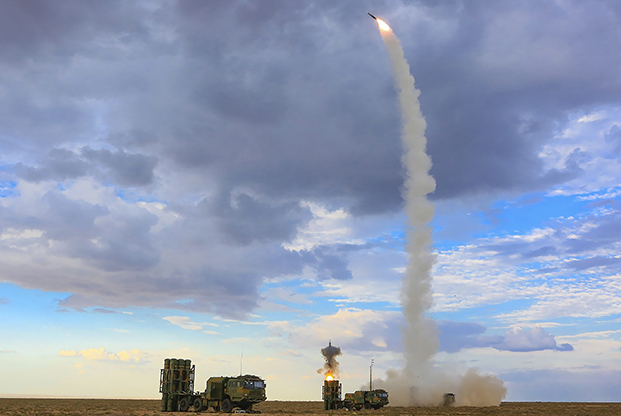
CHINA’S SYSTEMS-CONFRONTATION WARFARE
Mosaic is conceived, in particular, as a response to the burgeoning threat posed by China, which has carefully designed its systems warfare strategy to counter America’s traditional way of war. China’s A2/AD capabilities are designed to block America’s physical access to combat zones and negate its ability to maneuver. Yet these systems do not merely pose technical and operational challenges; rather, according to Elbridge A. Colby, one of the authors of the National Defense Strategy, China intends to employ them to achieve strategic-level effects, rendering the most critical elements of US operations ineffective.
The overwhelming effectiveness of the United States in Operation Desert Storm precipitated a major shift in Chinese military theory. China scholar M. Taylor Fravel notes: “China’s intensive study of the United States through the 1990s, especially toward the end of the decade, was intended to identify weaknesses that could be exploited, in addition to areas to copy.” As a result, China envisions targeting US data links, disrupting information flows, denying command and control, and kinetically targeting physical nodes of US information systems, with the goal of systematically blinding US commanders and paralyzing their operations.
As Colby suggests, the Chinese A2/AD complex is not just an integrated air defense system, but more importantly a critical piece of a larger strategy to target and defeat US forces as a system. RAND analyst Jeffrey Engstrom calls this strategy “system confrontation” and its theory of victory “system destruction warfare.” In combat operations, he says, “PLA planners specifically seek to strike four types of targets, through either kinetic or nonkinetic attacks, when attempting to paralyze the enemy’s operational system.”
These attacks encompass:
- Information. Degrading or disrupting the flow of information in the adversary’s operational system by targeting networks, data links, and key nodes to leave elements of the operational system “information-isolated” and thus ineffective.
- High Value Assets. Targeting the key nodes or functionalities within the adversary’s operational system, including command and control, ISR, and firepower: “If the essential elements of the system fail or make mistakes, the essence of the system will [become] nonfunctional or useless.”
- Operations. Degrading or disrupting the operational architecture of the adversary’s operational system seeks to disrupt how elements of an adversary’s system collaborate and support each other.
- Speed. Distorting and extending the adversary’s time sequence or operational tempo (the OODA loop) aims to induce friction, confusion, and chaos by employing deception, creating nodal failures and network and data link outages to cause “stutter” at any stage in the decision loop or kill chain.
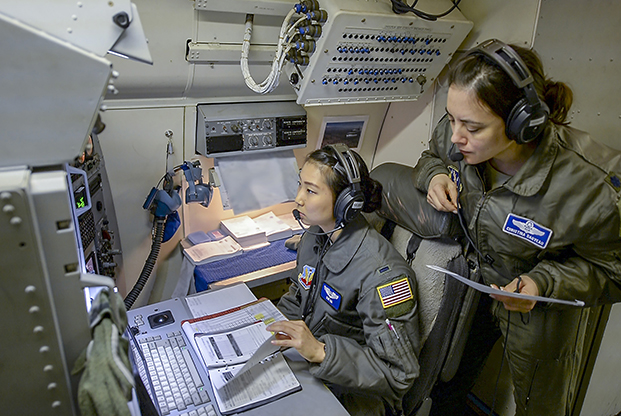
Lt. Col. Christina Darveau (right) trains 1st Lt. Crystal Na onboard an E-8C JSTARS aircraft at Robins AFB, Ga. Today’s JSTARS aircraft center battle management on one potentially vulnerable platform; mosaic seeks to make that capability more survivable by spreading the capability across the fleet. Photo: TSgt. Nancy Goldberger/ANG
THE TRANSFORMATION IMPERATIVE
Future adversaries will learn from China’s progress in maturing a systems warfare theory that targets US force design and operations, so systems warfare will not be limited to China over the long term. The Department of Defense should consider “systems confrontation” and “systems destruction warfare” as leading indicators, therefore, of how peer and near-peer adversaries could hold at risk US forces and operational architectures in the future.
America’s current way of war is vulnerable to this kind of systems warfare because of decisions made in the wake of the dramatic and overwhelming victory of the air campaign in the 1991 Gulf War. Afterward, DOD chose not to invest in maturing its own systems warfare strategy. Consequently, the US military today is unprepared for this emerging threat.
Compounding the problem is the dramatic downsizing of the Air Force after the fall of the Soviet Union. Had the Air Force been allowed to procure planned numbers of B-2s and F-22s; had it been allowed to pursue the Next-Generation Bomber in 2008 as programmed; and had it been allowed to maintain the pace of purchases of F-35s as originally planned, the risk posed by these peer threats today might not be so dire. There would be sufficient force structure to provide strategic depth in response. But nearly 30 years of budget-driven cuts have left the Air Force with margins that are too thin to face a peer threat, much less one employing a systems warfare strategy.
All the military services are in serious need of recapitalization today, but none more so than the Air Force, which is smaller and older than it has ever been in its history. Having spent the last 17 years operating in extremely permissive environments, it now finds itself too small, its information systems too brittle, and its command and control too centralized to withstand systems warfare. US force design therefore must be mapped to how US enemies intend to fight and to fill the resulting gaps in the current US force.
The problems plaguing today’s force include:
- Small inventories of capable, high-end multifunction platforms that make US operational architectures too vulnerable.
- The continued practice of buying multiple kinds of high-end weapon systems, but all in such limited numbers that their purchase is neither efficient nor able to provide the force capacity needed for great power conflict.
- Slow development and fielding for major new weapon systems.
- Difficulty scaling current force design appropriately across the spectrum of conflict.
- Critical shortages in key capabilities, such that the current force cannot withstand attrition and survivability factors threaten to outweigh the ability to create effects in future wars.
Without significant changes, neither the ways nor the means available to US forces will be sufficient to accomplish the ends outlined in the 2018 National Defense Strategy. The US military must reinvigorate the theory of systems warfare first manifested during Operation Desert Storm. Toward that end, mosaic warfare offers a new force design for optimizing US forces and operational concepts for the systems warfare of the future, rather than for the conflicts of the past.
MOSAIC WARFARE’S ‘KILL WEB’
In conventional warfare, the kill chain is defined by the “OODA” loop – that is, the steps necessary to observe, orient, decide, and act on a target. But in a mosaic operational construct, the point-to-point chain is replaced by a web of sensor nodes that all collect, prioritize, process, and share data, then fuse it into a continuously updated common operating picture. Instead of tightly integrating all those functions into a single, expensive platform, as in the F-35, in mosaic warfare, these functions are disaggregated and spread among a multitude of manned and unmanned aircraft that share data and processing functions across a perpetually changing network.
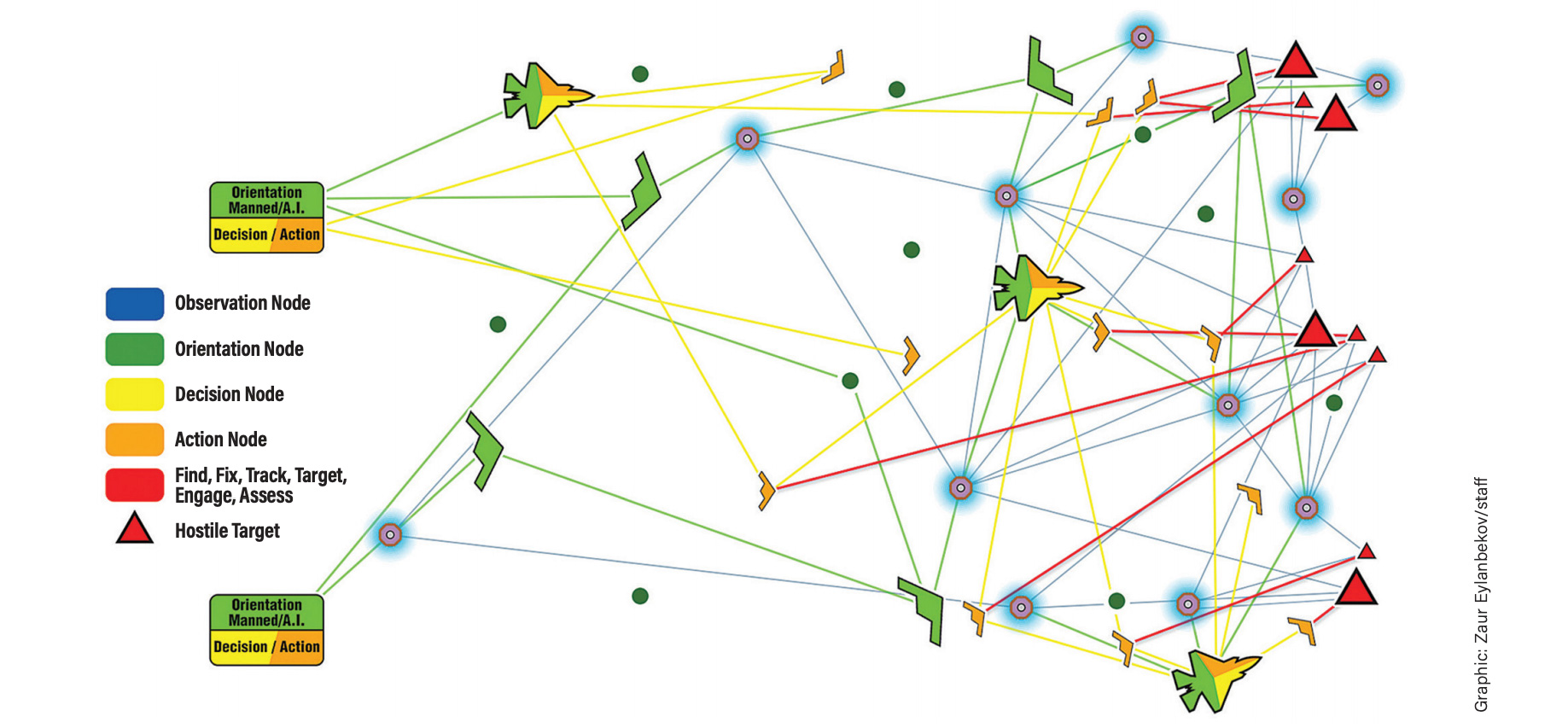

MOSAIC: A FORCE DESIGN FOR SYSTEMS WARFARE
In the mosaic concept, platforms are “decomposed” into their smallest practical functions to create collaborative “nodes.” These functions and nodes may be abstracted and broadly categorized by the familiar functionalities in an OODA loop: observe, orient, decide, and act.
In the past, an F-15 in an air-to-air engagement would need to first observe the airspace in its lane, identifying enemy aircraft with its radar, which is an observation node. When the radar received a return, that contact would be processed through the fire-control computer and displayed on the screen; together, these comprise the orientation node. The pilot can then engage other on-board sensors (additional observation nodes) to improve his orientation before deciding on an action (making the pilot the decision node). Finally, the pilot can take action, pairing a missile to the contact and firing the weapon (the action node).
Up until now, increasing the speed of operations required that all these OODA functions had to be hosted on a single weapon system to complete a kill chain. Indeed, fifth-generation aircraft have accelerated this process by pushing orientation and decision closer to action at the forward edges of combat. Advances in processing power, algorithms, and data links have made these aircraft incredibly valuable battle managers in contested and dynamic environments.
Historical case studies show that orientation must be located where there is processing capacity to filter, correlate, and fuse observations into meaning, or orientation. The closer orientation and decision nodes are to the point of action, the faster and more effective the outcomes.
Today, however, advanced data links and processing make it possible to integrate these functions even as they are disaggregated into distinct platforms. Thus, these functions can be distributed throughout the battlespace and integrated not in a single platform, but over distance through data links, to achieve effects.
Conceptualizing mosaic through an abstracted, notional operational architecture—where functionality is the focus, not specific technologies or platforms—enables the development of a more heterogeneous force and technological growth. This is a critical point: Being overly prescriptive with regard to technology risks condemning a force design to rigidity, brittleness, and/or obsolescence.
The design should support both multifunction platforms—hosting many different functionalities—and simple-function nodes hosting just one or two. When pieced together, these smaller functional elements can form operational OODA cycles that today must be managed within a single system. Leveraging advanced networks, data links, and enablers such as artificial intelligence/machine learning, a mosaic design can target adversary systems with just enough overmatch to succeed.
Built on adaptable and highly resilient networks with redundant nodes, these systems could create multiple kill paths, minimizing the critical value of any single system in the network to ensure US forces remain effective in contested environments. In other words, by disaggregating functionality, the mosaic force can survive network and nodal attrition and still be effective. Mosaic combines the attributes of highly capable, high-end systems with the volume and agility afforded by numerous smaller force elements that can be rearranged into many different configurations or presentations.
Yet the mosaic force design concept is more than just an information architecture. Mosaic offers a comprehensive model for systems warfare, encompassing requirements and acquisition processes; the creation of operational concepts, tactics, techniques, and procedures; and force presentations and force-allocation action, in addition to combat operations. For example, by disaggregating and abstracting the operational architecture into OODA nodes instead of major programs, both requirements setting and acquisition can be simpler and faster. The ad hoc connectivity of a mosaic force enables faster and more adaptive tactical innovation to generate numerous potential kill paths. And because mosaic nodes are like LEGO blocks, force presentations can be tailored and surprising.
The attributes of a mosaic force design can help increase the speed of action across the US warfighting enterprise, whether quickly responding to urgent new requirements, integrating innovative or out-of-cycle capabilities, or developing new operational plans. The guiding principles and technologies that underpin a mosaic force design will help enable the United States to prevail in long-term competitions with great power adversaries.
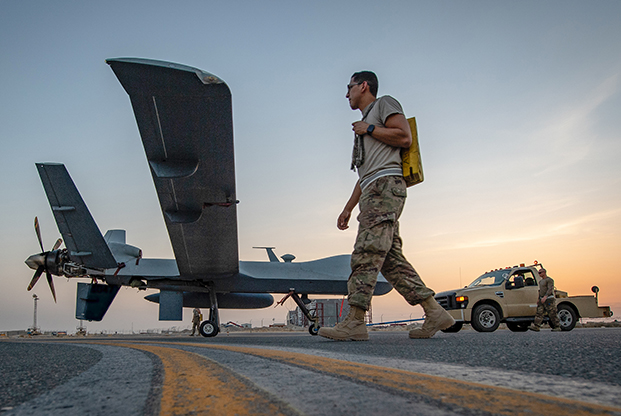
IMPLEMENTING MOSAIC FORCE DESIGN
Implementing a mosaic force design will challenge doctrine, tradition, parochialism, bureaucratic fiefdoms, and even the pride of victories past. Yet, to support the priorities of the 2018 National Defense Strategy, the US must adapt its approach to warfare. To migrate to a mosaic force design, the US must:
- Maintain commitments to current force structure and programs of record. While some defense leaders may advocate for bold moves, bold does not always mean wise. Terminating current programs and divesting force structure without replacements in hand will only exacerbate current vulnerabilities. The acquisition of high-end capabilities, such as the F-35 and B-21, should be accelerated, and the development of disaggregated elements must be introduced to create a future mosaic force.
- Aggressively invest in developing and fielding mosaic enablers. Artificial intelligence underlies nascent, critical technologies, such as autonomy for maneuver, decision-making, and network routing, which together make up the connective tissue that will enable a mosaic force and operational concept. These mosaic enablers will unlock the power of current platforms even as new, simple-function platforms reach the field. Mosaic enablers are about changing how the US employs its forces, not just what is in the inventory. Mosaic enablers create the path for the current force to migrate to a more effective, resilient, and surprising mosaic force.
- Experiment with mosaic operational concepts, architectures, and empowered command and control at the edge. Fully aligning information and command-and-control architectures with an operational concept is crucial to any force design. Continuous tactical experimentation with cutting-edge technologies, combined with rigorous operational analysis, is necessary to explore the art of the possible and how to exploit mosaic enabling technologies. These experiments would also help identify other needed technological investments and refine future doctrine and operational architectures.
- Conduct an operations-focused cost assessment of force design alternatives. A future US force capable of deterring or, if necessary, prevailing in a high-end systems warfare conflict will require greater capacity compared to the current force. Sufficient capacity (force size) as well as the right mix of capabilities will be critical to achieving the attack density needed to defeat great power aggression and sustain a deterrent posture in other theaters. High-quality wargaming of force design alternatives augmented by operational and cost analyses could help identify the right force size and mix needed to implement the 2018 NDS.
Many trends already indicate the value and potential of mosaic operations. Early examples of systems, technologies, software, and architectures that are mosaic in nature are already being developed or fielded. Indeed, the US Defense Advanced Research Projects Agency and the services have been investing in maturing many of the mosaic enablers that they have already identified. Mosaic-type operations are not new to the US Air Force, and the service is perhaps the best candidate to take the lead role in developing a mosaic force design concept that could reshape DOD’s planning, processes, force structure, and how it executes its missions.
A nation’s military backstops the political grand strategy of any great power. The United States must out-adapt adversaries who have, and will continue to adapt to, an obsolescing US force design. Indeed, the United States can migrate to a more effective force design even as new elements are introduced to make it more effective in character and operational concept. What cannot migrate is resistance to this new way of war—a mosaic force design—within a defense culture conditioned by an atypical era of absolute military dominance, permissive threat environments, and a lack of peer adversaries. Swift decisions are needed at the apex to align thinking and resources to the enablers of mosaic warfare.
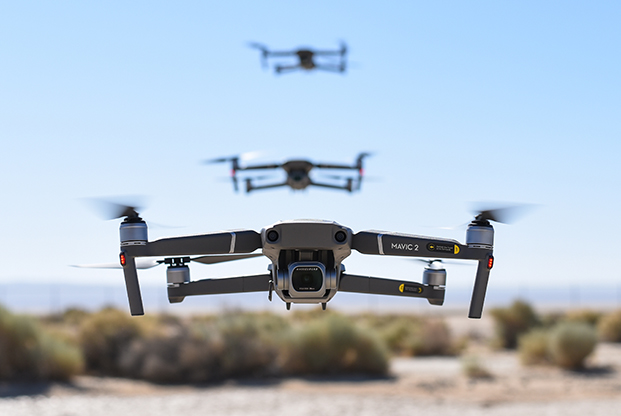
TERMS OF REFERENCE
Systems Warfare
A theory of warfare that does not rely on attrition or maneuver to achieve advantage and victory over the adversary. Instead, systems warfare targets critical points in an adversary’s system to collapse its functionality and render it unable to prosecute attack or defend itself. A major objective of this approach is to maximize desired strategic returns per application of force (achieve best value).
Force Design
Overarching principles that guide and connect a military’s theory of warfare and victory, its doctrine, operational concepts, force structure, capabilities, and other enterprise functions.
Disaggregated Element
Functionality that has been decomposed to its most basic practical combat element; for example, an observation or orientation function. These elements can range from simple functions, such as a single-sensor observation node, to more complex platforms, as needed, to be viable in the overall combat system, such as a multifunction aircraft.
Node
An element in the combat zone, whether disaggregated or multifunction, that participates in the operational architecture by receiving and sharing information.
Mosaic
A force design optimized for systems warfare. Modular and scalable, a mosaic force is highly interoperable and composed of disaggregated functions that create multiple, simultaneous kill webs against emerging target sets. A mosaic force’s architecture is designed for speed, has fewer critical nodes, and remains effective while absorbing information and nodal attrition.

This article is adapted from the Mitchell Institute paper “Restoring America’s Miltary Competitiveness: Mosaic Warfare,” which can be downloaded in its entirety at: http://www.mitchellaerospacepower.org/publications.
